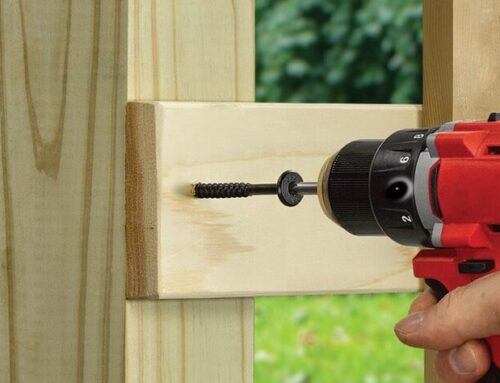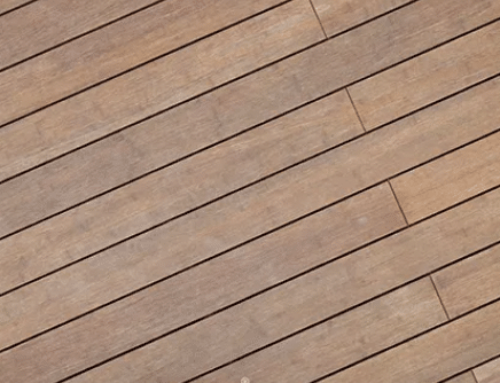In Depth: Decks, LBM Journal
Outdoor living continues to drive growth in decking projects.
Zuri Premium Decking from Royal Building Products comes in five colors—chestnut, walnut, pecan, Brazilia, and Weathered Gray— and two board profiles, and it’s backed by a 25-year color fastness warranty.
Decks are the darling of home improvement. Thanks to a strong housing market, a growing economy, and interest rates that remain low, the decking industry is poised to experience continued growth, and homeowners are poised to take advantage by incorporating more and more deck projects into their building and remodeling plans. According to the 2017 U.S. Houzz Landscape Trends Study, the share of outdoor projects motivated by a recent home purchase increased to 33% in 2017 over last year’s rate of 25%, and 20% of homeowners surveyed indicated that they plan a deck remodel for the coming year.
A major driving factor in this growth is the continued homeowner interest in outdoor living. Homeowners and contractors are increasingly working together to create personalized, unique structures that are reflections of the outdoor living needs of their families, creating immersive, form-meets-function environments. “While decks have been a common sight in most backyards for decades, they are now taking on new meaning,” explains Juliana Rumbaugh, Marketing Communications Manager for Lonza Wood Protection. “Homeowners are embracing outdoor living and entertaining by building elaborate decks that include fireplaces, televisions and full kitchens. Building decks and outdoor structures continues to be a top remodeling project that allows for the extension of living space. Decks are built or expanded upon with the intention of extending the living space to outdoors. Families and friends gather on the deck to visit, enjoy meals together and even watch sporting events.”
Residential construction drives growth
According to MoistureShield, its new Vision™ deck and trim boards create a modern variegated appearance unlike any other decking product, and the manufacturer anticipates that its new patterning technology developed for Vision decking will eventually enable homeowners, builders or designers to customize the surface of their deck boards.
Following patterns seen in the past few years, growth in the decking segment remains strong and is predicted to stay that way. According to IBISWorld’s U.S. Market Research Report on Deck and Patio Construction published this past November, over the last five years the decking industry experienced 5.4% overall growth as a whole, fueled by improving credit conditions, rising income levels and an increase in total demand for residential housing.
In the Freedonia Group’s recent Wood and Competitive Decking report, demand will reach 3.55 billion linear feet by 2020, worth an estimated $7.1 billion, with growth anticipated for both wood and non-wood decking products. The report goes on to predict that the non-wood share will continue to rise by 4.5% annually and will reach 17.9% by 2020, with wood decking forecasted to increase 1.3% annually through that same time period.
Brent Gwatney, Senior Vice President of Sales for MoistureShield Composite Decking, has high hopes for the coming year. “We’re very optimistic for the 2018 decking season,” he says. “We’ve had strong sales ever since coming off the Great Recession, and this year has many positive indicators. Builder confidence is strong, and the NAHB forecasts 4.6% growth in single-family housing starts for the year. Remodeling activity also is strong, and with the growing popularity of outdoor living, many people are looking to expand or replace their existing decks, or build a new deck.”
Manufacturers seem to agree that the single biggest growth segment in the coming year will be in residential single-family homes, both in new construction and in remodeling. “As the economy continues to strengthen, we see remodeling projects picking up,” says Juliana Rumbaugh, marketing communications manager for Lonza. “We expect an increase of about 4.5% in deck projects in residential, singlefamily homes which continues to grow faster than the other categories.”
Perhaps even more than the new residential construction market, the remodeling segment appears poised for strong growth. “In 2018, we anticipate all deck projects to grow,” says Mike Descoteaux, Marketing Manager for DuraLife Decking and Railing, “however, remodeling projects are especially popular as homeowners continue to gravitate from traditional decking products toward low-maintenance alternatives.”
DuraLife now offers color-matched decking board end caps for its Siesta, MVP, and Starter decking profiles. According to DuraLife, these end caps enhance the appearance of the deck perimeter and provide a more costeffective solution for deck builders than the traditional “picture framing” installation method.
Chris Camfferman, Director of Category Marketing for Deckorators, sees strong remodeling growth over the next twelve months. “We expect the decking and railing market to grow approximately 5% this year. Both new construction and remodeling will drive projects. Deck remodeling continues to be strong as homeowners see investment in the outdoor space adding real value to their homes.” Patrick Barnds, Senior Vice President for AZEK Building Products, agrees. “Single-family residential remodeling is where we expect to see most of that growth being concentrated, which is the single biggest segment of the market these days.”
This is not to say that commercial projects are flat; in fact, some manufacturers see the commercial segment as having the potential to deliver significant gains. As Jessica Hewitt, Director of Marketing for Humboldt Redwood, explains, “For businesses in the entertainment, hospitality, leisure, and sports industries, beautiful outdoors spaces with decks, shade structures, seating, and other amenities enhance the customer experience. Businesses invest in these outdoor spaces to bring in new business and keep current customers coming back.”
Read the original article here on LBM Journal






